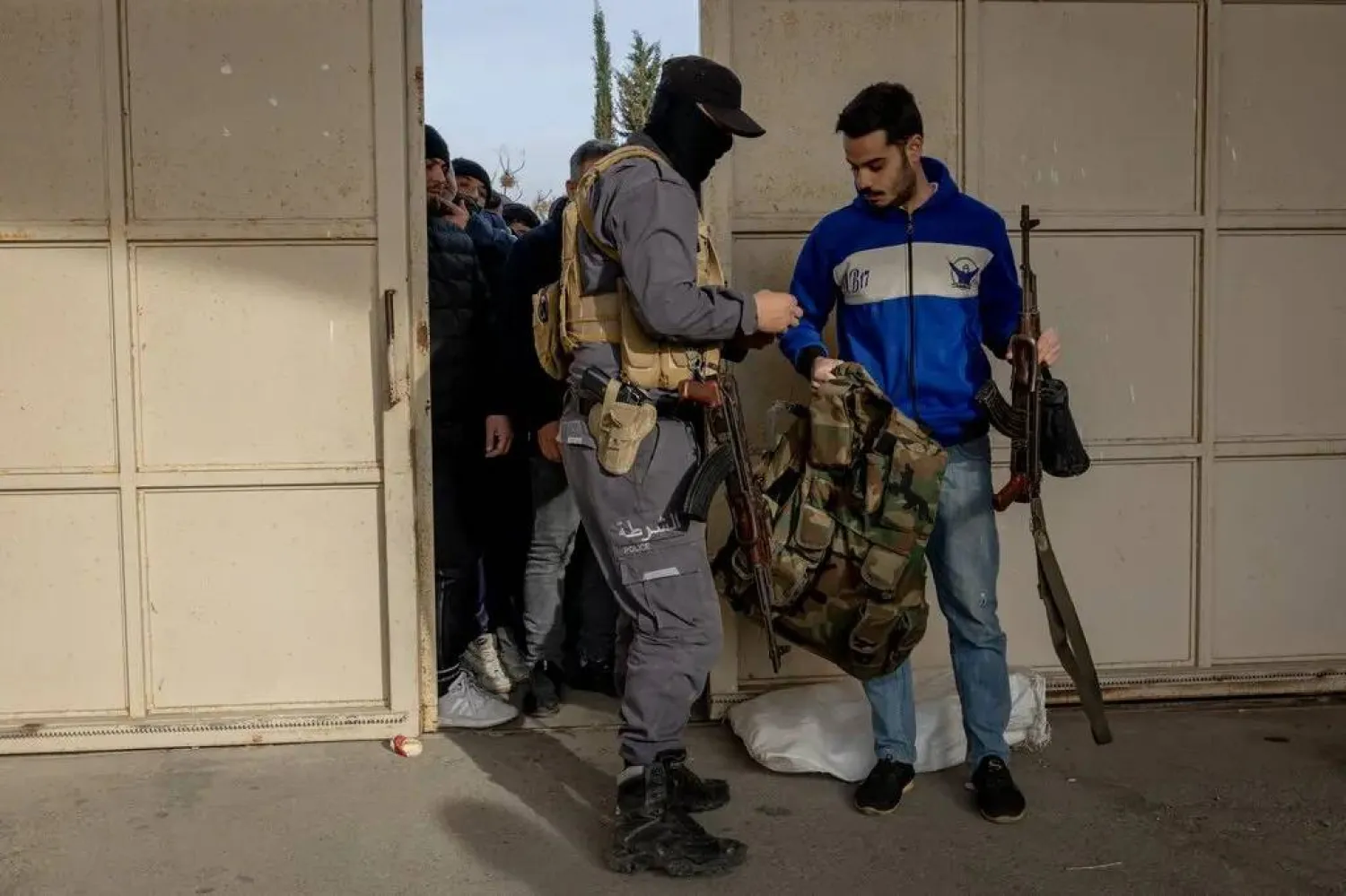On October 15, 2023, a rundown ship docked at Abu Qir Port in Alexandria, Egypt. The ship had sailed in from Romania and sent for repairs. At that moment also, Ahmed Issam Barakat, 27, Mohammed Daadour, 33, and eight others arrived from Ezbat Al Borg city in northern Egypt to work on the ship.
Barakat had worked as an oiler in Ezbat Al Borg where the majority of the population works in fishing and aboard ships. He chose to work at sea, obtained a seafarer passport in August and took up a job as an assistant mechanic on the newly docked ship. That was his first job at sea.
Daadour was not enticed by the sea like Barakat. He had graduated with a degree in media from Mansoura University. After becoming a father and the head of a family, he decided to turn to work at sea to earn a better living.
In the summer of 2023, Barakat and Daadour applied for work at a marine shipping company in Damietta city and they were hired to work for the RAPTOR in October. The men didn’t know at the time that the ship had just returned from a suspicious voyage in the Black Sea. It never occurred to them that they would become new victims of rundown ships that operate the black market.
At the repair yard, the crew worked day and night for 35 days to cover and paint over the flaws of the ship, such as holes and rust. Photos sent to relatives of the crew showed just how rundown the ship was.
Daadour telephoned his wife, telling her about the “big holes” in the ship, she told Asharq Al-Awsat. One crew member even tried to quit because he was afraid that the ship would sink once it sails.
On the day the ship was to be loaded with its cargo and salt, Daadour and his colleagues were surprised to learn that they were getting the day off and that new workers were being brought in to do this specific job.
At 1 am on November 22, the ship set sail from Alexandria to Istanbul, but under a new name: ROVANA.
Egyptian maritime lawyer Ahmed Kamel suspected that the name change was because the owners were aware that the RAPTOR had a poor reputation, had previously been blacklisted and subject to inspections dozens of times at various ports. The owners believed that the name change would make international sailing easy and “legal”.
Conflicting information has emerged over the weight of the cargo. Official declared figures showed it was carrying around 4,000 tons of cargo and 294 tons of salt. Other documents showed that it was in fact carrying 6,400 tons with the additional 2,000 never having been declared. It was also carrying liquid salt that was improperly stored.
Moreover, the crew was told that the ROVANA was headed to Istanbul, when in fact, it was sailing to Ukraine via Libya.
Daarour, Barakat and seven others, who made up the 14-member crew, had never worked on a shipping vessel before. The captain was Egyptian Rashad Hafez, who had over 20 years of experience working on shipping vessels. The rest of the crew consisted of a marine engineer from India and two sailors from Syria.
Captain Waled Jomaa, a friend of Hafez, said hiring nine crew members with no sea experience was a bad omen that the already rundown ship was going to be in trouble if it encountered any problems at sea.
Barakat said the flaws in the ship became more apparent after the salt was loaded onto it. Water started to seep in from the right side and it began to slant in that direction. He revealed that the crew had to dump the water out of the ship throughout the journey. That was only the beginning of their troubles.
The business of rundown ships
The 39-year-old RAPTOR sailed under the Comoros flag. Responsibility for a ship lies on the country whose flag it is flying, not the port from which it sailed. So, some rundown ships suffering from technical problems or embarking on a suspicious journey often resort to raising the Comoros flag because the country is lax in applying marine safety regulations.
Ownership of the RAPTOR was transferred from a Turkish to a Lebanese shipping company in 2019.
The continuous synopsis record (CSR) showed that the Lebanese company became the commercial manager of the ship. Ownership was transferred to an Egyptian company Equasis. The Lebanese company told Asharq Al-Awsat that it was in no way tied to the ownership of the RAPTOR.
From 2018 and until its final voyage in 2023, the RAPTOR racked up 205 grave violations at several ports and was blacklisted by international marine authorities since 2022. It was held for 279 days at Bulgaria’s Burgas port in 2018 over 29 grave violations.
How could such a ship continue to be allowed to sail? Just two months before its final journey, it added 65 violations to its record in Romania.
The key here lies in the change of ownership. During the time it was held in Burgas, the ownership was changed from the Turkish to the Lebanese company in May 2019.
The market of rundown ships is very active in Türkiye and Syria. Owners of these ships get rid of them on the black market and sell them at very low prices. They are then bought by shipping companies that make light repairs and maintenance as the cost of full repairs would start at at least 100,000 dollars.
Daadour, Barakat and the other rookie seafarers were unaware of these details, all they wanted was to earn a living and improve the lives of their families. The owner company even refused to disclose the ownership details of the ship. Daadour managed to secretly photograph them and send the documents to his wife. They confirm that the RAPTOR was owned by the Egyptian company.
Inquiries by Asharq Al-Awsat to the company were unanswered. A captain who has very close ties to the company revealed to Asharq Al-Awsat documents that prove that it owned the RAPTOR. But the ship was named the ROVANA, meaning the operating contracts were tied to a ship that no longer exists.
When the then-RAPTOR was still in Romania, its Egyptian captain at the time was Ahmed al-Dally. He told Asharq Al-Awsat that he discovered major flaws in the vessel.
“I exerted major efforts for the ship to be released from Romania to Egypt. I quit my job as soon as I arrived. The ship that had just docked in Alexandria was rundown and had three big holes. It should have never sailed again,” he said. “The inspection in Romania revealed catastrophic flaws.”
The RAPTOR was guilty of another grave violation: manipulating fuel records. It is repeat offender, with such offenses going back to 2018. The discovery forced the International Association of Classification Societies to impound the ship because it was not seaworthy.
The manipulation of fuel records is a red flag in any shipping vessel, because it means the ship is consuming more fuel than the number of miles it is declaring, meaning it is making undeclared journeys with this extra fuel.
Veson Nautica, which works on developing, implementing, and supporting maritime commerce solutions, revealed that since the eruption of the conflict in Ukraine in 2022, the RAPTOR had made repeated voyages from Libya to Ukraine. Between 2022 and November 2023, the ship didn’t make a single journey outside the Mediterranean, except to head to Ukraine.
During these journeys, the RAPTOR would turn off its radar as it entered a specific zone between Lebanon and Cyprus. It would turn it back on again after exiting that zone. The Automatic Identification System (AIS) is a short-range coastal tracking system used on ships. Ships are prohibited from ever turning it off while at sea.
Captain Jomaa said shutting off the AIS allows coastguards in any country the right to follow the ship and search it. These ships are often accused of smuggling.
Speaking to Asharq Al-Awsat on condition of anonymity, a former officer in the Greek coastguard said regular shipping journeys are carried out between Libya and Ukraine, raising questions that they may be smuggling weapons and fuel.
Final journey
Back on the RAPTOR, the journey was going well for Daarour. He would update his wife about the trip whenever he had an internet connection.
The journey took a turn for the worse when the ship entered Greek waters on November 24, 2023. A storm was forecast for the next day and until the 26th. Despite the warning, the captain sailed on, and the ship started to take on more water.
Daarour said the ship lacked any equipment that would help the crew in case it sank. There even weren’t enough lifejackets. The crew worked on dumping the water out, but sinking was inevitable.
Daarour sent a message to his wife that the ship was flooding. The captain issued a distress call to the Greek coastguard and was awaiting a response. On deck, Barakat was working tirelessly to dump water off the ship to the extent that he became nauseous.
Daarour sent his wife a photo of a Greek island just off the ship. He reassured her that the crew would swim towards it.
Daarour’s messages to his wife revealed that the owner of the ship had contacted the captain that night to angrily rebuke him for contacting the coastguard. The owner said the ship mustn't reply to the coastguard, that it must turn off its radar and change course immediately towards Turkish waters.
The captain complied and started sailing away from Greek shores until the ship reached four nautical miles off Greece’s Lesbos island that is located near the border with Türkiye. The ship then turned off its radar as the crew continued its fight to survive.
Barakat recalled that by that point the ship was tilting sharply to the right. Greece that night announced that the area was witnessing strong winds and waves as high as five meters.
Aya, Daarour’s wife, said her husband was the only person on board who had a Greek phone number and internet. He concealed this information from the captain and ship owner who had strict instructions that there could be no contact with anyone outside the ship. This was obviously an attempt to conceal the ship’s course.
Aya said her husband revealed his phone when the ship started to sink that night. He gave it to the crew so that they could bid farewell to their families.
At 6:15 in the morning of November 26, the RAPTOR appeared on radar some 4.5 miles off Lesbos. Having lost hope, the captain reopened communications lines and sent a distress call to the Greek coastguard at 7:20 am.
Daadour was making his final calls on the phone before the sinking. He called his mother to tell her “I am drowning with everyone on board this ship.”
On the other side of the ship, Barakat was the only member of the crew left without a lifejacket as there weren’t enough. He flung himself in the sea and clung onto a wooden barrel.
Despite the short distance to shore, the coastguard wouldn’t locate them until around two hours after the distress call. A helicopter arrived to take Barakat to Mitilini Hospital in Greece. When he regained consciousness, he thought he was the last of the crew to arrive, believing that the lifejackets would have saved them.
Turns out he was the sole survivor.
The entire crew perished and the ship with its cargo was lost in the Aegean. Forty-eight hours after the sinking, Greece announced that there were no survivors except Barakat. The search was officially called off after three days.










